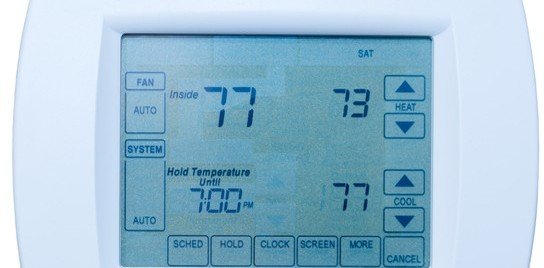Heating and cooling are the most energy-intensive systems for residential retail electric customers. Many energy consumers do not think much about these systems until they face maintenance issues or system replacement. When replacing a home heating system, there is a multitude of high efficiency models from which to choose. Consumers should become familiar with the technologies available and consider the cost to operate the system in addition to the cost to purchase the system.
Residential customers living in moderate climates have a choice of technologies when it comes to heating their homes. Gas furnaces are a common and cost-effective method of home heating. Electric heat pumps are also widely used. In addition to using different fuels, energy consumers should be aware of how these heating systems operate if they are building a new home or in the market to replace their existing system.
Gas Furnaces
Gas furnace operations are relatively simple. A mixture of natural gas and air ignite in the furnace combustion chamber. A heat exchanger, located adjacent to the combustions chamber, warms the air. A blower fan then distributes the warm air from the heat exchanger throughout the home. Natural gas provides the thermal energy and electricity powers the blower motor. The important concept here is that a furnace actually creates heat.
Heat Pumps
Heat pumps operate very differently. First, electricity is the only power source used to operate a heat pump. Second, heat pumps do not create heat. Heat pumps simply transport heat from one place to another. There are two main categories of heat pumps. Air-source heat pumps transfer heat between the air inside the home and the air outside the home. Geothermal or ground-source heat pumps transfer heat between the air in the home and the ground or a body of water. This discussion will only address air-source heat pumps.
A heat pump essentially consists of an outdoor coil, refrigerant, a compressor, and an indoor coil. The compressor circulates refrigerant that absorbs and releases heat as it travels between the outdoor and indoor coils. Even when the weather is cold, there is some amount of heat in the outside air. The heat pump strips that heat from the outdoor coil and transfers it to the indoor coil. An air handler then distributes the heat from the indoor coil throughout the home. In summer, the process reverses and heat is removed from the home and dissipated through the outdoor coil. A heat pump, therefore, serves both cooling and heating needs depending on which direction it moves heat.
Choosing a Heating System
How does a retail energy customer choose between these two heating systems? Ultimately, a licensed heating and cooling professional will assist the homeowner with selecting the right system. However, it is still important for the consumer to be familiar with the advantages and disadvantages of these space heating technologies.
One of the biggest advantages of a heat pump is its efficiency and safety. Because heat pumps simply move heat rather than create heat, they can be 30-50% more efficient than a gas furnace. In addition, heat pumps can be sized to run almost continually. This reduces wear on the mechanical components from excessive cycling. Furthermore, there is no risk associated with carbon monoxide and other combustion gases.
One of the disadvantages of heat pumps is that they work most efficiently in moderate climates. When temperatures get below freezing, a supplemental heat source like electric resistance heat is usually necessary. Electric resistance heat is an expensive way to heat a home. Therefore, a homeowner should avoid selecting a heat pump in colder climates where supplemental heat will be required.
Gas furnaces, on the other hand, are relatively inexpensive with respect to both equipment and fuel. Natural gas rates are lower than electricity rates on a BTU basis in many parts of the country. Natural gas is a clean burning fuel and a gas furnace, when properly installed and maintained, is a safe and economical means of heating a home.
The bottom line is to take into consideration all cost and operating aspects of a home system before making a choice. Understand the efficiency ratings of both systems, consider electricity and natural gas costs, and make sure the system is appropriate to the climate.



I didn’t know that a heat pump could work so well in moderate climates. We don’t get extreme cold where I live, but we have a furnace and it seems to be kind of excessive. I like the idea of getting a heat pump to save some money on utilities and repairs. I’ll have to see if I can get a heat pump for my home. Thanks for the info!
I was in much need of an air condenser and I have bought it from electric furnace outlet which is one of the best electric home furnaces and really worth it.